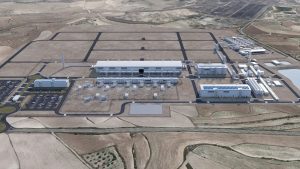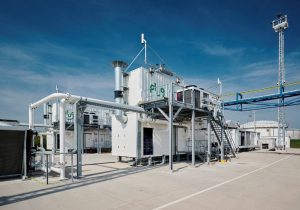“Unfortunately, 99% of hydrogen produced today is made from fossil fuels such as natural gas, coal, and oil,” says NewHydrogen CEO Steve Hill. “While these methods are cheaper than producing green hydrogen today, they come at a significant environmental cost to the planet. To truly spark change, the price of green hydrogen needs to be competitive with these established methods.”
Mr. Hill continues: “Currently, the most common method of making green hydrogen is to split water into oxygen and hydrogen with an electrolyzer using green electricity produced from solar or wind. However, green electricity is, and always will be very expensive. It accounts for 73% of the cost of green hydrogen and will continue to represent most of the cost in the future.
“Conventional solar panels can only convert about 20% of sunlight into useful electricity, whereas sunlight can be converted to heat with 90% efficiency. By using heat directly, we can skip the expensive process of making electricity and fundamentally lower the cost of green hydrogen. Inexpensive sources of renewable heat can be obtained from concentrated solar, geothermal, nuclear reactors and industrial waste heat. Concentrated solar holds the most promise because it can be generated anywhere in the world using inexpensive mirrors.”
A team of world-class chemical and materials engineers at UC Santa Barbara (UCSB) is helping the company find a better way to efficiently split water using heat to produce cheap green hydrogen. The UCSB team plans to exploit the oxidation reduction features of multi-component materials including high temperature liquids to directly split water continuously in a series of chemical looping reactions, producing hydrogen and oxygen in separate reaction chambers. The concept has been at work in other applications for some time at UCSB and the company decided to sponsor research to apply the methodology to water splitting.
“This is a very difficult process to achieve at reasonable temperatures, however, we believe we’ve found a way using molten liquids,” Mr. Hill discloses in the podcast video. “We call this technology, NewHydrogen ThermoLoop™. If successful it will be a novel, first of its kind, high efficiency thermochemical water-splitter that uses low-cost common materials and common industrial temperatures of less than 1,000°C to potentially produce the world’s cheapest green hydrogen.”
Mr. Hill concludes: “I want to underscore the significance of our approach – the application of direct heat to split water to produce green hydrogen. Using heat directly is the key to our innovation – a novel approach that transcends existing limitations and paves the way for a more sustainable and cost-effective energy future. Our goal is to produce the world’s cheapest green hydrogen. So cheap that our technology has the potential to be used to make green fertilizers cheaper than gray fertilizers made from natural gas, a benchmark that signals the start of a new clean energy future.”
This podcast can be viewed at https://newhydrogen.com/thermoloop-video.php.






